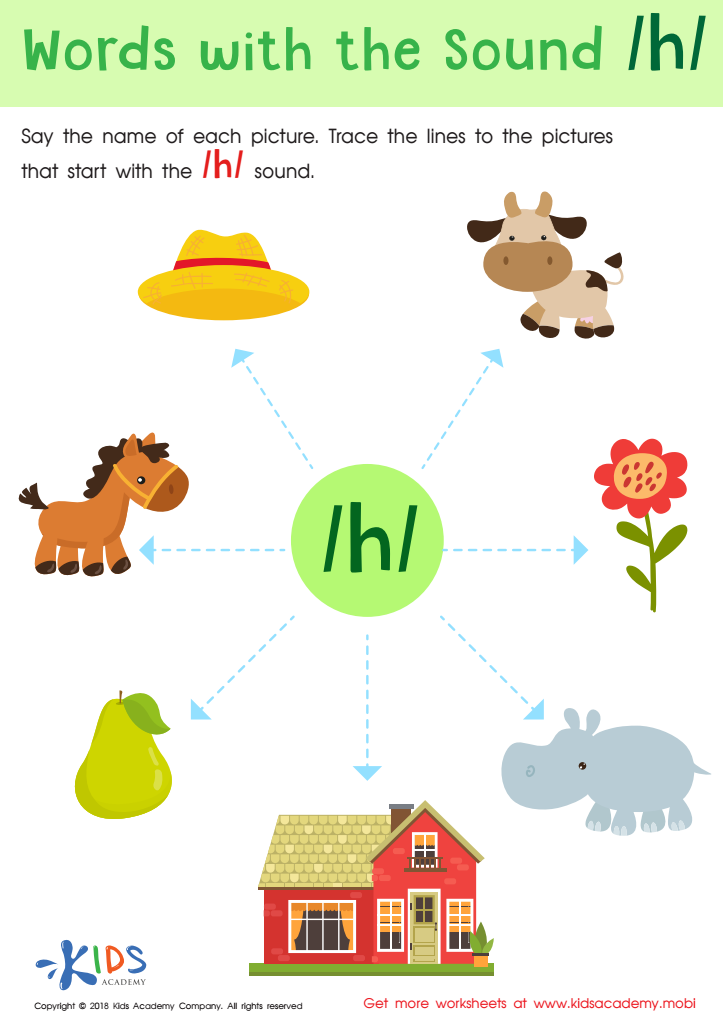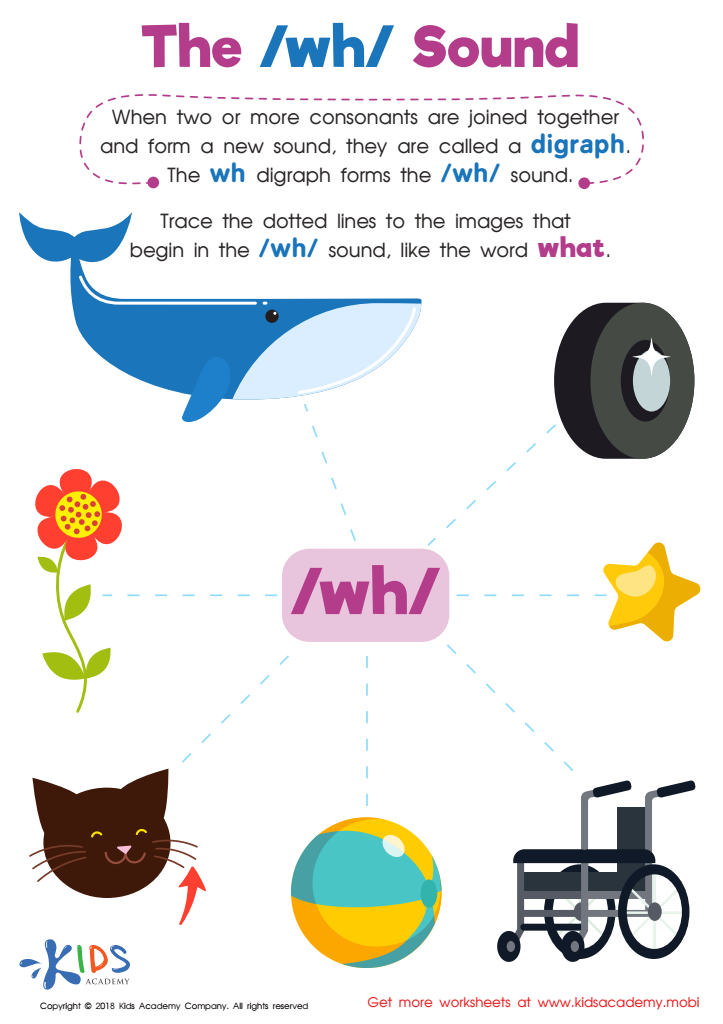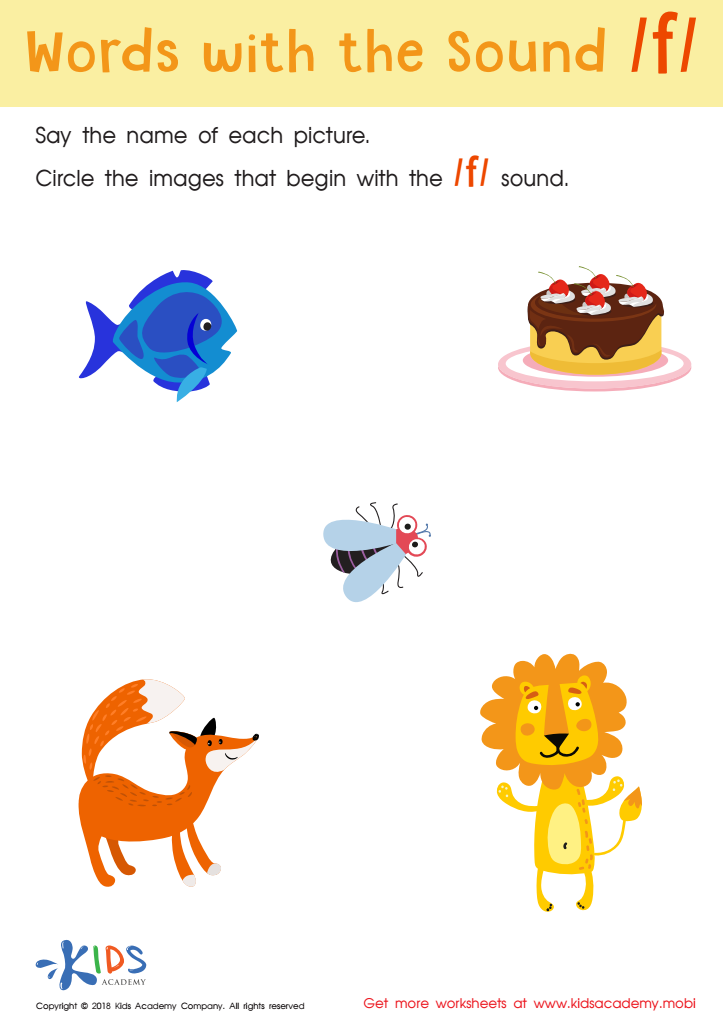Sound Association Normal Consonants Worksheets for Ages 4-6
3 filtered results
-
From - To
Discover our "Sound Association Normal Consonants Worksheets" designed for children ages 4-6! Aiming to build strong foundations in phonics, these engaging worksheets help young learners associate consonant sounds with corresponding letters. Featuring fun, interactive activities, kids can practice pronunciation, enhance listening skills, and boost early reading readiness. Ideal for both classroom settings and at-home learning, our expertly crafted materials ensure an enjoyable educational experience, making phonics fun and effective. Encourage your child’s literacy journey with these creative tools that support meaningful, hands-on learning. Explore exciting possibilities with Kids Academy’s consonant sound association printable worksheets!


Words with sound h Reading Worksheet


The /wh/ Sound Worksheet


Words with sound f Reading Worksheet
Sound association for normal consonants is a foundational skill that forms the cornerstone of early literacy development for children ages 4-6. At this age, children's brains are exceptionally receptive to language acquisition, making it a critical period for establishing core reading and writing abilities.
Understanding consonant sounds and their associations helps children decode words, an essential step in learning to read. When young learners grasp that each consonant has a distinct sound, they can more efficiently decode written text, improving their reading fluency. This, in turn, fosters confidence and encourages a lifelong love for reading.
Moreover, mastering proper consonant sounds aids in clearer speech and better communication skills. Children who can articulate consonants correctly are more likely to be understood, reducing frustration and boosting self-esteem.
Phonemic awareness, or the understanding that words are composed of individual sounds, is directly linked to future reading success. Early mastery of consonant sounds accelerates this awareness, ensuring children are well-prepared for the academic challenges ahead. Teachers and parents who focus on sound association are essentially setting their children up for future scholastic achievements, social interactions, and overall cognitive development. Thus, investing time and resources in this phase of learning is crucial for a child's educational journey.
 Assign to My Students
Assign to My Students








